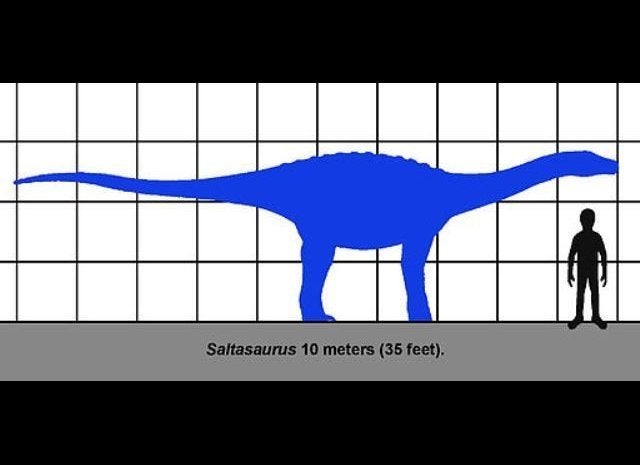The long-necked sauropod dinosaurs are perhaps the most culturally iconic prehistoric animals, appearing in everything from Flintstones cartoons to the Sinclair gas station logo. The first live dinosaur glimpsed by the paleontologists in Jurassic Park was a sauropod, just as the first animated dinosaur -- Gertie (Winsor McCay's classic Gertie the Dinosaur) -- was a sauropod. Every parent knows Brontosaurus, and every kid knows that it's now called Apatosaurus. Some of the most awe-inspiring skeletons at a natural history museum are the sauropods.
Much of this cultural influence comes down to one thing: immense size. Sauropods were the biggest animals ever to walk the land, and even Hollywood is hard-pressed to come up with something more imaginative than that which evolution wrought.
Extremes in biology beg the question of how. How did sauropods achieve their massive size? Was it something in their metabolism? Sometime in their food supply? Something in their reproductive cycle? How did sauropods carry themselves? Did they have erect necks like an ostrich, or something more horizontal? Or was every sauropod a little different? Sauropods not only pushed biological limits -- they also push the limits of our own biological knowledge.
There is only so much one can tease from a skeleton. However, there is also great power in this limitation. A new collection in the Open Access journal PLOS ONE Sauropod Gigantism, a Cross-Disciplinary Approach. (Disclosure: Andy Farke served as an academic editor for several of the collection's papers) sum up nearly a decade of concentrated work by a variety of researchers using old and new research methods, from fossil discovery and skeleton mounting to lasers and computer modeling.
Although some of the contributions to the sauropod collection will not be without contention within the research community (arguably a good mark of relevance!), all of the papers measurably advance our knowledge. The most powerful aspect of this is in exploring the biological limits that guide both modern and extinct animals. These limits are a moving target, the product of a virtually infinite number of variables. By identifying the most critical variables, it is possible to both explain modern biological systems as well as infer the behavior of prehistoric ones. Although we may never know the exact details of sauropod biology, the research presented here goes a long way towards marking those boundaries of biological probability. Not too bad for animals that have been dead for over 65 million years!
So how did they get so big?
The easy answer is evolution. According to the organizer of the new PLOS ONE sauropod research collection, evolutionary biologist Martin Sander, over deep time, lineages within an animal species evolve according to the interplay of two main factors: key innovations, in which they gain some new anatomical or behavioral character that allows them to flourish and expand their niche, and historical contingency, in which past and existing characteristics constrain where the lineage can go next. A trait that emerges from these colliding (or complimentary) forces is referred to as a "cascade." Sander highlights five that resulted in what paleontology refers to as sauropod gigantism: 1) having many small offspring, 2) lacking a gastric mill (a grinding apparatus in the stomach), 3) not chewing food, 4) having a bird-like lung, and 5) having high metabolism. Each of these areas is covered by the newly published PLOS ONE research highlighted in subsequent slides.
This slideshow introduction is written by Andy Farke, a vertebrate paleontologist at the Raymond M. Alf Museum of Paleontology and a PLOS Network blogger.

